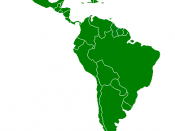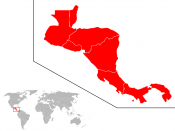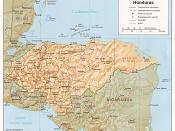The Country of Honduras: A brief report on Honduras, including its economy, culture, environment, etc.
Reviews of: "The Country of Honduras: A brief report on Honduras, including its economy, culture, environment, etc."
:
More Area & Country Studies Essays
essays:
Alfarería Nativa Americana
... . When Clay Sings. Portland: Small Fry Press, 1976. Muth, Marcia. Indian Pottery of the Southwest: a Selected Bibliography. Santa Fe: Southwest Publications, 1990 ... la olla se quedará llano, permite su belleza natural muestra. La mayor parte del tiempo el alfarero será una mujer. Sin embargo, muchos ...
New York the Empire state
... River and the Atlantic Ocean with the Great Lakes. EARLY HISTORICAL FACTS Ancient Indians reached New York more than 11,000 years ago. They hunted animals with ... a third of all the battles were fought in New York. New York City was the United States capital from 1785 to 1790. In 1789, George ...
Egypt
... America back home, you see only sky-scrapers and big luxurious cities ...
Sweden
... largest and most profitable. It can be found at the thousands of running rivers that engulf the country ... , forest products ... country. This resource is hydroelectricity. By utilizing the rivers that flow from the towering mountain tops the Swedish have saved a bundle while making the most of mother nature ...
Australia and the Great Barrier Reef
... reef lies in the Great Barrier Reef Marine Park, the world's largest marine park. It has an area of nearly 350 000 square kilometres. The reef region is 260 ... level about 20 000 years ago. The existing reefs were at this time limestone hills rising from the plain. The sea level started to raise about ...



More research
Although Wikipedia is a good place to find information, be sure to go to other sources as well. Go to the library and check out an almanac or some geography books on Honduras. I am not criticizing by any means, just letting you know how to improve your writing.
2 out of 2 people found this comment useful.